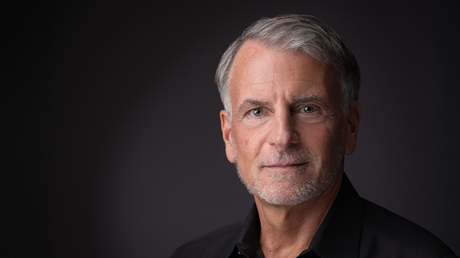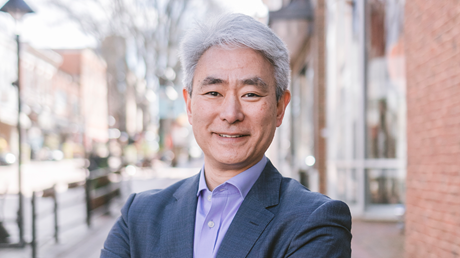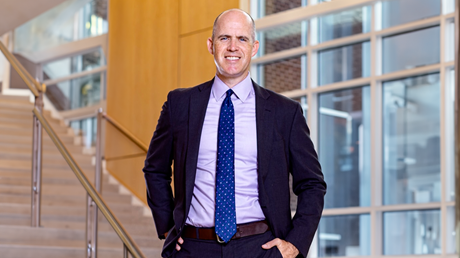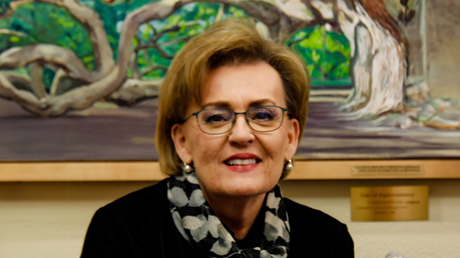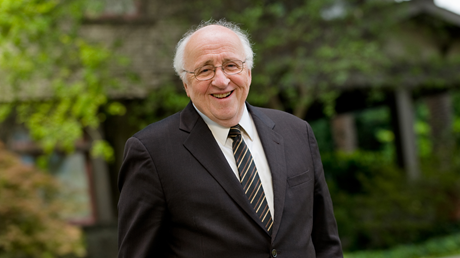Will you help encourage and connect the church?
Give NowWill you help encourage and connect the church?
Give NowIn mainline denominations where a significant number of leaders had liberal leanings, many rank-and-file clergy and lay leaders held more orthodox views and felt discontentment with the status quo. But they had no flag to follow. They had no counterbalance to the view presented in publications such as The Christian Century.
Joe Blinco, Cliff, and I often met these concerned Christians when we visited homes during Crusades; we spent hours talking with them, sometimes sitting on the floor for our "bull sessions." Back then I had the strength and stamina to stay up to all hours in lively discussions with pastors and theologians. I wanted to call these servants back to the Bible, back to the priority of evangelism and missions, back to a freshened ethical understanding of the ways to relate our Christian faith to the issues of the day.
For seventy years, Protestant liberalism had enjoyed a platform through The Christian Century magazine. Founded in 1884 by the Disciples of Christ denomination, it became a force in religious journalism in 1908 when Chicago clergyman Charles Clayton Morrison took it over. For the next few decades, it was a flagship of Protestant liberal theology, social action, and even politics. With equal vigor, it judged as outdated, even obnoxious, the views of conservative Christianity—or fundamentalism, as they labeled it. As Dr. Martin Marty, a distinguished church historian at the University of Chicago who has been long associated with The Christian Century, wrote at its centennial, "The editors saw fundamentalism as a backwoods, over the hill, jerkwater phenomenon that had already outlived its time."
Partly because of the efforts of The Christian Century, conservative Christianity had fallen into disrepute. The nineteenth-century evolutionary theories of Charles Darwin had spilled over into other fields of learning, including theology, where it threatened the traditional views of the integrity and authority of the Bible. Conservatives (who were more often called evangelicals) of that era fought to define and defend the "fundamentals" of the faith; hence, the term fundamentalist.
The Christian Century waged war on the liberal side, contending that Scripture was open to what it called "higher" criticism. In this view, the Bible, although it had religious value, was not the inspired Word of God or the objective standard of truth for our faith and practice. Instead, it was a book of human origin, to be approached the same way any other human book was approached—which is to say, critically and even skeptically.
The periodical's philosophy was progressive, inclusive, optimistic, and relatively humanistic, within a loose framework of Christian concepts. "Modernism" was the vaunted label it wore. It counted on human effort to bring in the kingdom of God on earth. Even the magazine's title expressed its founders' optimism that human nature was basically good and that the twentieth century would be a time of unparalleled progress and peace. The primary mission of the church was to help shape this "Christian century" through direct and indirect social action. At the same time, theological distinctive were downplayed and evangelism was redefined—or dismissed as unimportant or irrelevant to the work of the church.
The Christian Century guided the thinking of a large number of American clergy and, in turn, their church members. But the depression and war were hard for liberals to coordinate with their optimistic philosophy. Even Morrison himself began rethinking his position. On November 8, 1939, he wrote the following in the magazine: "I had baptized the whole Christian tradition in the waters of psychological empiricism and was vaguely awaking to the fact that, after this procedure, what I had left was hardly more than a moralistic ghost of the distinctive Christian reality."
With World War II followed to closely by the Korean War, general disillusionment became epidemic. Many clergy were desperate for tenable alternatives. However, "fightin' fundamentalism" was not what they were looking for.
About two o'clock one night in 1953, an idea raced through my mind, freshly connecting all the things I had seen and pondered about reaching a broader audience. Trying not to disturb Ruth, I slipped out of bed and into my study upstairs to write. A couple of hours later, the concept of a new magazine was complete. I thought its name should be Christianity Today. I worked out descriptions of the various departments, editorial policies, even an estimated budget. I wrote everything I could think of, both about the magazine's organization and its purpose. I stated that it should have the best news coverage of any religious magazine and even specified that it should be located in Washington, D.C., which might give it a measure of authority in the minds of some; that crucial location would also keep its editors and staff in contact with the latest news. I wanted it also to be a focal point for the best in evangelical scholarship, for I knew that God was already beginning to raise up a new generation of highly trained scholars who were deeply committed to Christ and His Word.
My idea that night was for a magazine, aimed primarily at ministers, that would restore intellectual respectability and spiritual impact to evangelical Christianity; it would reaffirm the power of the Word of God to redeem and transform men and women. As I had witnessed, the Gospel of Jesus Christ had that effect everywhere around the world.
A relatively short time passed before the magazine became a reality. When it did, in 1956, I believe a force was realized that has helped change the profile of the American church. It was to become another example of the power of the press.
The idea also came to me that night that we should raise enough money in the beginning to send a free subscription to every pastor and every seminary student and professor in the United States, and a stack of them to every seminary, Bible school, and Christian college in the country. I was convinced that most clergy didn't care where their reading material came from if it was good material; many of them were already used to receiving gift subscriptions.
I was not the man to be the editor, though. Such a magazine would require spiritual and intellectual leadership and professional skills I didn't have. We needed someone who could win the respect and support of weary and wandering preachers and seminary professors, the kind Martin Marty called "chastened liberals."
The first man I shared my vision with was my father-in-law, Dr. Bell. His wisdom served as a compass. It amazed me to learn that a similar idea for a magazine had often occurred to him. He became a key person in developing Christianity Today. One of the first things he did was to take soundings about the magazine idea among ministers and professors; he found the reaction overwhelmingly positive.
Next I turned to Dr. Wilbur Smith, a well-known evangelical leader and professor at the recently established Fuller Theological Seminary in Pasadena. I flew to California and outlined my plan to him. To my surprise, he began to weep. "You know," he said, "I've been dreaming and praying about something like this for years." Although he eventually declined my invitation to serve as editor, he gave invaluable counsel.
Dr. Bell already had extensive experience in writing and editing, having been instrumental in starting a magazine called The Presbyterian Journal, which had been organized to uphold biblical theology and practice within the Presbyterian Church in the United States. Later he gave up his successful surgical practice in Asheville, North Carolina, to work full-time at the task of launching Christianity Today. He also became its executive editor, commuting regularly to Washington from his home in Montreat and writing "A Layman and His Faith," a regular (and very popular) column in the magazine.
Eventually, Dr. Bell and I shared my vision with J. Howard Pew, chairman of the board of directors of the Sun Oil Company. I met him for the first time not long before conceiving the idea for Christianity Today. He had been asking me to come to Philadelphia to meet with him and spend the night. I had never heard of him, and I declined. Then he sent me a check for our work in the amount of $25,000, along with a message: "When you come and spend the night with me, I'll have another check for $25,000 for you." Needless to say, that got my attention! After that (and my visit to Philadelphia; yes, I flew up there!), we got to know each other very well. I came to have great affection and admiration for him, not because he had a great deal of money but because he was a man of God and a man of wisdom who wanted to see his wealth used wisely for the cause of Christ.
Early on in our relationship, I mentioned that we were thinking of starting a magazine, and I made bold to ask him a direct question: "Would you contribute heavily to that?"
He smoked his cigar and looked out the window. "Well, I'll talk to my sisters [Mabel and Ethel] about it. I think we can do it."
In the magazine's early years, he supported Christianity Today generously; in fact, without his support I have no doubt the project would have failed. He was very conservative politically and didn't always agree with some of the editorials in the magazine, but never once did he threaten to withdraw his support or attempt to control its editorial policy.
Another strong supporter was Maxey Jarman, a Southern Baptist layman from Nashville, Tennessee, with business interests in New York and elsewhere. He not only helped financially but also offered sound advice.
Another early consultant was Dr. Harold Ockenga, minister of the historic Park Street Church in Boston, whose friendship I talk of in an earlier chapter. "I wish we could organize an editorial board," I wrote him, "and start a magazine that would be precisely like The Christian Century, except from an evangelical viewpoint … We should avoid extremes, both to the right and left. We should discuss all issues objectively and not from a biased point of viewpoint."
The choice of an editor became one of the thorniest problems.
A college acquaintance, Harold Lindsell, wrote to me about our mutual friend from Wheaton days, Dr. Carl F. H. Henry. Carl had been in the Wheaton College graduate school when I was at Wheaton. "He had tremendous insight into the application of the Gospel to the social problems of the day," wrote Dr. Lindsell, "and he also has an awareness of the weaknesses of fundamentalism along with a keen insight into the problems of neoorthodoxy, liberalism, and conservative Christianity."
I had some questions about Carl, though. He had professional journalism experience, but I had read some of his recent work and told Harold that it "has a tendency to be rather heavy … and though I am a minister of average intelligence, it has been very difficult for me to follow." That was an understatement! I thought The Christian Century did a good job of representing the liberal cause in popular language, and I coveted the same effectiveness in our journal.
My frequent references to The Christian Century underscore how much we respected that magazine as a promoter of its viewpoint. While I felt it represented a dying cause, not for a moment did I underestimate its influence. Nor did I take lightly its journalistic standards, and I desperately hoped we would be able to do as good a job for evangelicals as it had done for liberals.
I did not want our magazine to be divisive. Harold strengthened my determination on that count: "One cannot be a member of the body of Christ in a vertical relationship without also having a horizontal relationship with his fellow believers who are members of the same body," he wrote. "Division is sin and nothing will obscure that fact, even though it may presently be stressed more by the ecumenical movement than it is being stressed by our conservative brethren. The divisive approach is death and it cannot hope to succeed …"
While I was in the United Kingdom for several months in 1955, Dr. Bell kept me informed of the project's progress by phone and mail. I read between the lines. I had some anxiety about agreements between him and some of the other principals, especially those I had in mind to be members of the board of directors. I prayed every day about the project. The men who would make the board were friends of mine, but many of them didn't know each other. I felt that they would unite behind the project, and I knew that I would have their confidence in the beginning in a way others would not. I was anxious that we not get conflicting opinions break into small segments of thought.
I wrote to Mr. Pew (With a copy to Dr. Bell) on April 13, 1955: "These campaigns that thrill and excite the clergy for a short period and show them what God can do with old-fashioned theology must be followed through with a periodical that will give them a reason for the hope that is in them … The Lord seemingly has given me the vision for this paper and I am desperately afraid of its getting out of hand."
I went on to name ten men to a board of directors, with myself as chairman. This had been furthest from my intention at the start. In fact, I had not even wanted my name associated with the prize in a prominent way; the connotations some people had of Crusade evangelism might prejudice them before they gave the magazine a fair reading. We wanted to appeal to all kinds of people. In addition, the magazine I had envisioned might have to take strong positions with which I would not want to be totally identified.
Dr. Bell allayed any misgivings in his reply to me in Glasgow. He wrote that my letter was "like a breath of fresh, cool air. I do not believe anyone but yourself can bring these very strong-minded people into the homogeneous group that we must have."
The top spot on the first Christianity Today masthead—editor—carried the name Carl F. H. Henry. It had taken some doing to get it there! Ever since Harold had first mentioned his name, Carl had emphasized that he was not seeking the job. He even wrote Dr. Bell listing several reasons why he should not be considered. Nevertheless, he was the right man for the position.
As for the contributing editors, I suggested to Carl a people I had met in my travels throughout the world—people he wouldn't necessarily have known. Among these were English and Australian leaders and World Council of Churches people whom I knew to be evangelical. And of course Carl included some whom he knew were real theologians.
The hallmark distinguishing Christianity Today was a commitment to the trustworthiness of Scripture as the Word of God, with all of the ramifications of that commitment. Of supreme importance to me also was our editorial strategy. Instead of using the stick of denunciation and criticism, we would present a positive and constructive program. We would attempt to lead and love rather than vilify, criticize, and beat. Conservative Christians had failed with the big-stick approach; now it was time to take a more gentle and loving direction. Thousands of young ministers and theological students in churches and seminaries were ready to be led, but at any pushing, probing, and fighting they would rebel. We would not compromise the essentials of our faith, but we would use a positive approach to the same objectives that conservative Christians had failed to win using other means for twenty years. We knew that not everyone, especially extreme fundamentalists, would follow the magazine. However, it was my vision that the magazine be pro-church and pro-denomination and that it become the rallying point of evangelicals within and without the large denominations.
On October 10, 1956, I was in Louisville, Kentucky, staying at the Brown Hotel during our Crusade there, when an airmail letter from Dr. Bell arrived: "My dear Bill. 285,000 copies of the first issue Christianity Today finished rolling off the presses in Dayton at 2 a.m. today."
That first issue, dated October 15, carried three articles dealing with critical theological issues, in addition to several editorials and book reviews. The distinguished Dutch theologian G. C. Berkouwer contributed an article on "The Changing Climate in European Theology"; Presbyterian theologian Addison Leitch wrote on "The Primary Task of the Church"; my contribution was more modest, a heartfelt essay on "Biblical Authority in Evangelism."
The lead editorial on "Why Christianity Today?" set the tone for everything we were attempting to do: "Christianity Today has its origin in a deepfelt desire to express historical Christianity to the generation. Neglected, slighted, misrepresented—evangelical Christianity needs a clear voice, to speak with conviction and love, and to state its true position and its relevance to the world crisis. A generation has grown up unaware of the basic truths of the Christian faith taught in the Scriptures and expressed in the creeds of the historic evangelical churches … Christianity Today is confident that the answer to the theological confusion existing in the world [today] is found in Christ and the Scriptures."
I was thrilled at the initial reactions. A Lutheran minister in New York City told a conference that as a result of reading the magazine, he had gotten on his knees and rededicated his life to God. A young Baptist minister told a denominational gathering that the article on the authority of the Bible in evangelism had caused him to have the same experience l had in 1949, accepting the Bible as the Word of God. Professors at both the Presbyterian and Southern Baptist seminaries in Louisville gave excellent reactions too.
Not long afterward, I visited a Catholic theological school. There I noticed a stack of copies of Christianity Today, which had been sent to the school free of charge.
"Is that magazine read and studied by the students much?" I asked the man showing me around.
"More than any other," he replied.
The BGEA contributed heavily to the initial cost and for many years continued to put several thousand dollars per month into the magazine. But early on, Christianity Today carne to a point where it faced bills amounting to $90,000 but had only $15,000 in the bank. Although the BGEA wanted to help more, we were already beginning to incur heavy expenses connected with the Crusade we planned for Madison Square Garden in 1957.
Carl Henry was troubled that the board would face what he called a "rescue operation" at its January 1957 meeting. We needed about $200,000 more than we anticipated. If there were to be serious cutbacks, Carl said, he couldn't consider a second year with the magazine.
Dr. Bell Wrote to him at once: "You have the qualities none of the rest of us have and we would be completely lost without your guiding hand."
That Carl stuck with it relieved and delighted all of us. By the end of our first year of publication, we had claimed our niche in religious journalism. I sent a note to Carl: "I thank God everyday that you have seen fit to take this as your responsibility. I believe you are making the greatest possible contribution to the entire church at this critical hour."
A few years after we began publication of Christianity Today, we became involved in two magazines in Britain.
I had heard that the Church of England Newspaper, which leaned toward the evangelical point of view, was going to close because of a lack of finances. It was a stock company, and I asked Jerry Beavan to see if he, acting on my behalf, could purchase the majority stock; he did so. My plan was to sell it to a group of evangelicals or to a Wealthy evangelical businessman. We didn't publicize our involvement, and later Sir Alfred Owen took over our interest.
We then purchased a struggling magazine in Great Britain called The Christian. Our goal was to make it similar to Christianity Today. It had been started in the previous century and covered extensively Dwight L. Moody's ministry in Britain; by 1962 it was on the point of being closed by its owners, the publishers Marshall, Morgan, and Scott. Tom Allan, our friend from Glasgow, briefly came on as editor and also manager of our London office, but soon he suffered a heart attack from which he never recovered.
Dr. James D. Douglas of Scotland, a well-known editor and theologian, then took the helm. Jim turned The Christian into a relevant and respected evangelical periodical that made a significant impact during the seven years it was published. In spite of concerted efforts, however, its paid circulation seldom went above 15,000; the BGEA was forced to subsidize it heavily. We closed it rather abruptly in 1969. Admittedly, we caused some hurt feelings, and in retrospect I wish we had dealt with the closing in a more sensitive way. However, I am grateful that in time other British publications rose up to fill the gap.
In the subsequent decades, we have had many personnel changes at Christianity Today, and worldwide Christianity has seen much movement. Carl served as editor until 1968; he was followed succession of distinguished editors, including Harold Lindsell, Kenneth Kantzer, and Gilbert Beers, before the magazine moved to the editorial-team approach that it presently uses. In addition, regular contributors from all over the world give input and alert the editorial staff to new trends and events. Today the organization incorporates a number of other publications directed at specific groups, including pastors, youth, and families.
The road, however, has not been consistently easy. Some years ago, the board discovered that because of unwise business decisions (including an attempt to start a book club without thoroughly researching the matter), Christianity Today was facing a very large deficit of $900,000. A young publishing executive who was with Youth for Christ, Harold Myra, was brought in with the mandate to place the magazine on a businesslike basis with a break-even budget. He oversaw the magazine's move from Washington to Carol Stream, Illinois; that relocation saved a significant amount of money. Under his leadership, Christianity Today and its companion publications are among the best managed in the publishing industry, secular or religious.
Dr. Clayton Bell, senior pastor of Highland Park Presbyterian Church in Dallas, has continued his father's commitment to the magazine by serving as executive chair of the board of directors.
The magazine has changed throughout the years. Evangelicals are no longer an ignored minority. In fact, our greatest danger may come from our public visibility and influence. Christianity Today seeks to speak to these and other contemporary issues. I have always urged the editorial staff to deal with them in an openly biblical and theological way. I pray that the magazine will never depart from its founding commitment to high biblical and theological scholarship. All over the globe, people are desperate to hear a voice of biblical authority and to a find stable spiritual standard.
From the book Just as I Am by Billy Graham. Copyright © 1997 by Billy Graham Evangelistic Association. Reprinted by permission of HarperOne, an Imprint of HarperCollins Publishers.


